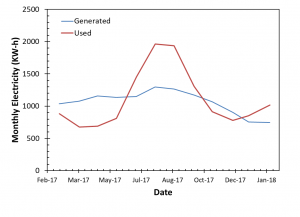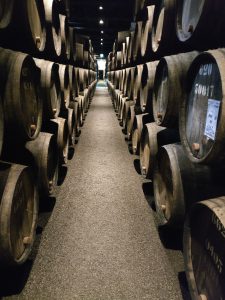Rio Grande, Puerto Rico, May 29 – June 1, 2018
Last year I complained a little bit about the 3-beams conference being at a resort hotel, where I felt stuck at the resort with its overpriced food and little to do. This year the 3-beams conference was also at an isolated resort hotel, but I am not complaining! It was on the east coast of Puerto Rico, and it was magnificent. I also had a rental car, so I could explore on my own.
As I’m sure everyone knows, Hurricane Maria devastated the island of Puerto Rico on September 20, 2017 (Category 4, winds of 155 mph). The Wyndham Hotel, where the conference was to be held, was severely damaged along with most of the island. Since the hotel was one of the few places on the east coast with generators, it became a center for first responders and relief efforts. It took millions of dollars in renovations to make the hotel ready for guests again. But the real problem was power – electricity wasn’t restored to that part of the island until the end of February. As you might imagine, the conference organizers spent some tense months wondering if the conference would have to be moved at the last minute. But the hotel reopened on March 1, 2018, and was fully ready for the EIPBN conference at the end of May.
As is currently the case at every conference I go to now days, artificial intelligence/deep learning was a hot topic, bordering on buzzword. The dual availability of massive computing power and massive data sets have allowed neural networks made of numerous layers to finally become useful for some problems, though probably fewer than its proponents like to think. Heike Riel of IBM gave a very nice plenary talk reviewing deep learning’s compute requirements. Unlike conventional computing, which uses a 64 bit architecture, deep learning can live with 16 bit for training and 8 bit for inference. This lower precision requirement is coupled with requirements for low cost and low energy per computation to drive the development of new computer architectures just for this application. The result? IBM’s Watson now has speech recognition and image classification error rates that are lower than human error rates.
Geert Vandenberghe of imec reviewed their efforts at evaluating EUV (Extreme Ultraviolet) materials and explained why their metrics now always include unbiased roughness and stochastic defects.
I really enjoyed a thought-provoking talk by Vivek Goyal of Boston University on shot noise mitigation in scanned beam microscopy (such as SEM imaging). By carefully working out the stochastic components that lead to noise in an image (pixel to pixel randomness), he estimates one of the intermediate stochastic terms – the number of particles (such as electrons in an SEM) that strike the sample for a given pixel – using time-resolved sensing. For example, if an image is collected by averaging 16 frames (sixteen separate images), one can use the variation from frame to frame for each pixel in order to estimate, and then remove, some of the stochastic variation by making a better estimate of secondaries generated per incident primary.
Tatsuhiko Higashiki of Toshiba talked about the status of nanoimprint lithography (NIL) for the manufacture of Flash memory chips. Since Flash has been going vertical for several years now, there is no longer a drive for feature size reduction in lithography. The drive is for cost reduction. Toshiba is looking to NIL to achieve that cost reduction. Toshiba has one Canon FPA-1200 in its production line for evaluation. They have printed one manufacturing layer (contact holes) with NIL and achieved similar final yield compared to the current ArF lithography process.
Aaron Franklin of Duke gave an excellent talk on semiconductor scaling using nanomaterials. Device requirements for scaling power and feature size drive a need for new materials, and nanomaterials may be a key component of future scaling strategies.
Nelson Felix of IBM provided my favorite quote of the conference: an EUV source is “a massive Rube Goldberg machine.”
As always, the EIPBN conference provided me with a few nuggets of information, but more importantly some new perspectives.


 I love port. The fortified wine is lovely before or after dinner, and makes me feel more sophisticated and refined than I deserve. Port is made exclusively in the Duoro Valley of northeastern Portugal, then aged in wooden barrels in the coastal city of Porto. I’ve always wanted to visit there, so when I discovered that the 2017 MNE (Micro and Nanoengineering) conference was being held in Portugal, I made a plan to attend.
I love port. The fortified wine is lovely before or after dinner, and makes me feel more sophisticated and refined than I deserve. Port is made exclusively in the Duoro Valley of northeastern Portugal, then aged in wooden barrels in the coastal city of Porto. I’ve always wanted to visit there, so when I discovered that the 2017 MNE (Micro and Nanoengineering) conference was being held in Portugal, I made a plan to attend.